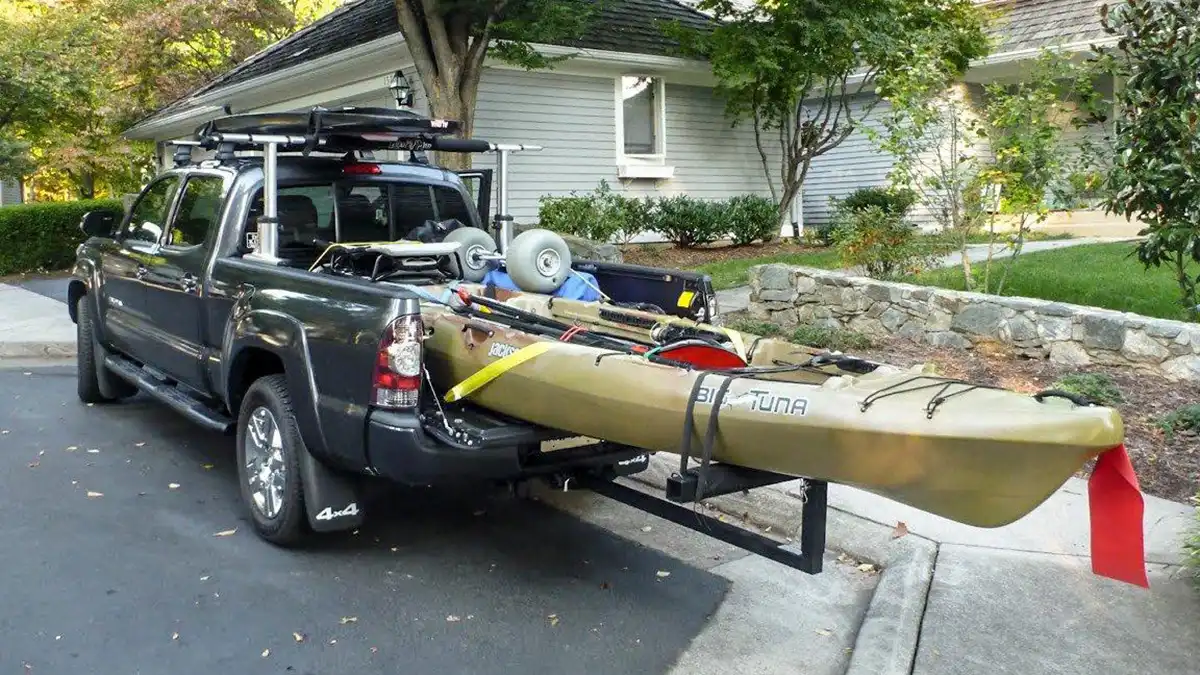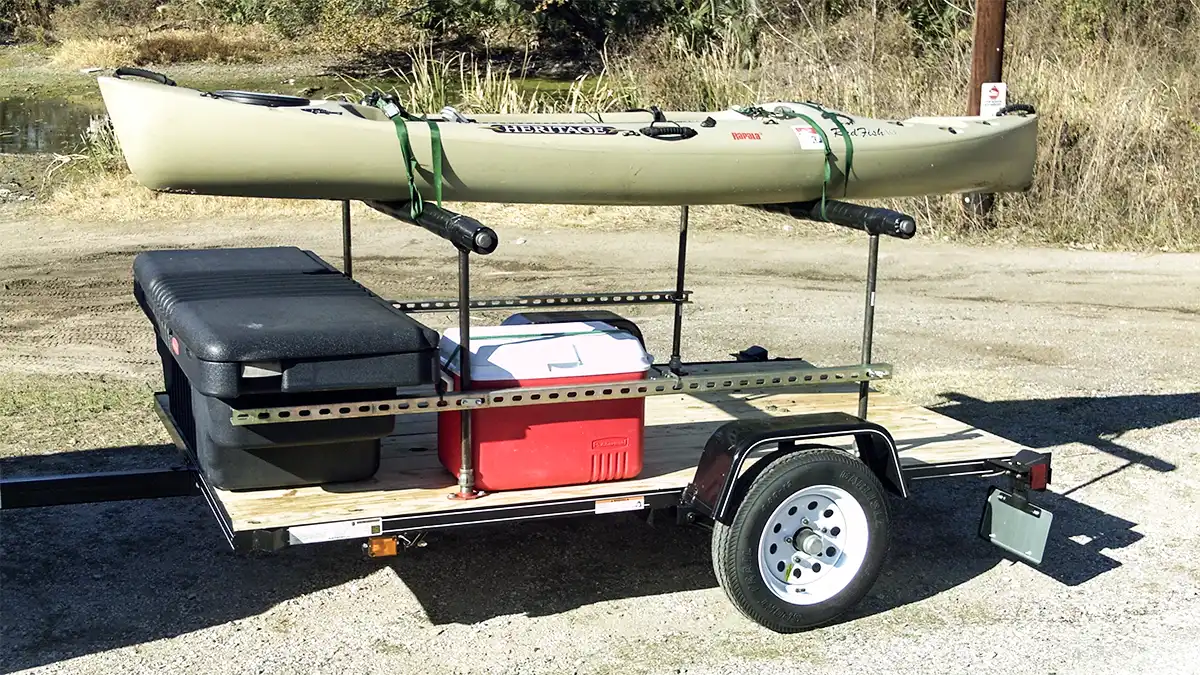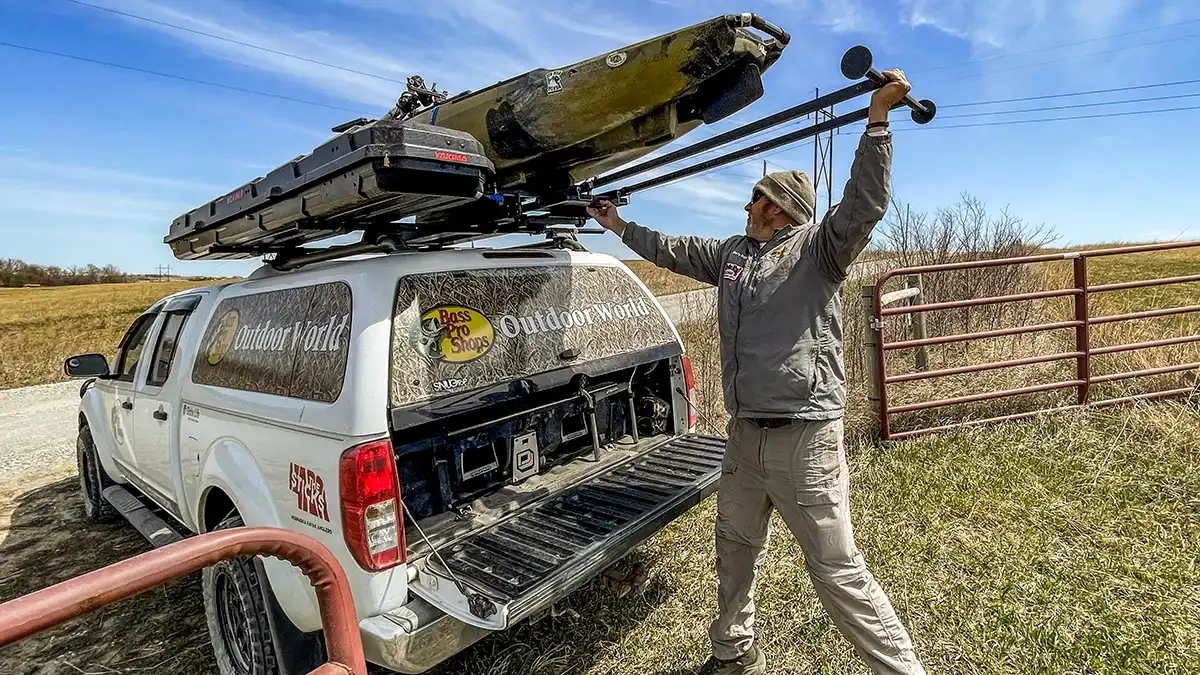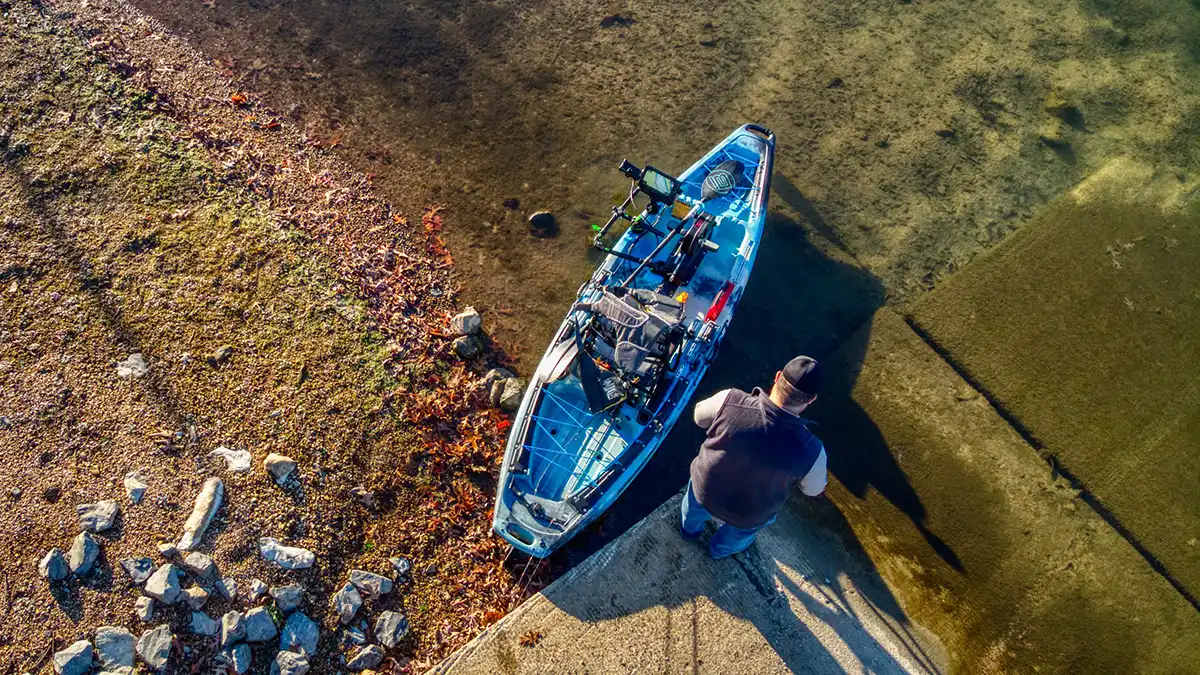Warning: Undefined variable $k in /home/nginx/domains/wired2fishcom.bigscoots-staging.com/public/wp-content/themes/understrap-child-0.6.0/functions.php on line 984
Warning: Undefined variable $k in /home/nginx/domains/wired2fishcom.bigscoots-staging.com/public/wp-content/themes/understrap-child-0.6.0/functions.php on line 987
Just about everywhere you go you will find a few vehicles with kayaks on top or behind them. Kayak racks, trailers and even truck beds are a necessity for hauling fishing kayaks to where you want to explore. But figuring out how to transport a fishing kayak with your personal vehicle can seem a little daunting at first. While a portion of kayakers choose to haul their kayak on a trailer or camper with a truck, many kayak owners are forced to transport their small plastic boats on the roof of their car, SUV or van. While putting a kayak on a trailer or throwing it in the bed of a truck is a bit easier option, there are a number of kayak racks that make getting a kayak up on top of a vehicle a little easier.
When we started kayaking a quarter century ago, there wasn’t much out there to transport a kayak. We simply strapped it to the roof scratching the paint off as we traveled to our destination. Fast forward many years down the road, and you can now find qualified roof rack systems, high end trailers and truck bed extenders that make hauling kayaks a lot easier. Not only do these newer options hold your kayak effectively in place but also not damage your vehicle or kayak.
In this article we will look at the most effective kayak transportation methods. From recreational, touring, fishing, or whitewater kayaks; there is a kayak hauling solution for you.

BED OF THE TRUCK
Most fishing kayaks are less than 15 feet long, most commonly around 12 to 13 feet. This means that they have more boat in the truck than sticking out, and the balance point allows you to simply slide it in and tie it so that it doesn’t slide out. Remember, once you put it in, you’ll want to load any gear on the boat inside the bed, keeping as much weight in the bed as possible to prevent the kayak from tipping down. A simple strap through the grab handle to the truck will keep it from sliding out. One person can do this easily.
If the kayak sticks out too far in the back, a hitch extender can be added to give you some more stability behind the truck bed. Be sure to put a highly visible flag on the back so people will see you have something extending out the back of the bed of the truck. Especially if you are going to park somewhere in a crowded parking lot.

KAYAK TRAILER
Kayak trailers gained in popularity the last 5 or so years. Because a lot of avid Kayak anglers travel together, or have multiple kayaks and a trailer can easily tow 2-4 kayaks without much hassle or worry. There are many different styles to buy that are ready to go for fishing kayaks and a lot of anglers have built their own from common flat bed trailers they already owned. Whatever you choose make sure you ratchet down the kayak so it doesn’t shift or slide around which can cause a trailer to sway behind you. See Marty’s list of recommended kayak trailers to buy.

KAYAK RACKS
Usually you will need a base roof rack system. A lot of vehicles come with these options from the factory. Others can easily be added by a good dealer. Once you have a base roof rack system in place, it’s time to look for the best option that will fit your needs. There are basically a handful of types of kayak racks. We have covered some of the most popular items in our Best Kayak Racks guide. But generally speaking there are the following types of Kayak Racks:
- J-Style Racks
- Full-assist Racks
- Flat Resting Racks and Saddles
- Rear Loading Racks and Saddles
The most popular of kayak racks are the J-Style, or J-cradles as most refer them to, and have the advantage of folding down when not in use. They also rest your kayak at a 45 degree angle which creates more room for your crossbars to carry other items or even another kayak if you so choose.
For those who wish to have their kayak rest flat on the roof area of their vehicle, a flat saddle will carry kayaks and SUPs easily with a lot less wind resistance. And generally they can hold a little more weight.
A rear loading system will simplify your loading with the wing style saddles and a modular loader that extends back from the center of the rear crossbar.

TRANSPORTING TO THE WATER
Transporting kayaks involves getting the boat to the water, but it also involves getting out of your vehicle and into the water and back again. There are three main ways to move a fishing kayak to and from the water:
- Carry
- Drag
- Roll
Carry the Kayak
This is best done with two people, one in front and one in back using the grab handles. It is always easiest before you load it with gear, of course.
Drag the Kayak
While your kayak will wear down over time if you drag it far on abrasive ground like gravel or pavement, it is made of durable plastic that is designed for that kind of abuse in moderation. Jackson Kayak and some other models have a “skid plate” on the back of the boat that is replaceable, so you can drag it and not worry about wear.
Drag by holding the grab handle with your hand, which requires lifting an end in the air. This is good for short distances.
Drag by putting a cam strap or rope through the grab handle and making a loop, stepping into the loop and wearing it around your waist. This allows you to simple walk with it, pretty neat.
Roll the Kayak on a Cart
Kayak carts are wonderful inventions. It effectively turns your kayak into a lightweight trailer. The wheels attached a variety of ways depending on the model you get. The two main ways are a strap that goes over the boat and holds the cart to the kayak, or two prongs that stick up into the “scuppers” of the kayak and hold it in place.
Wide wheels are best for sand and mud, while narrow bicycle type wheels are best for hard surfaces for minimum resistance.
TIPS FOR TRANSPORTING KAYAKS
Be sure to always check your fittings and straps for proper kayak security before leaving on your trip. Another tip is to frequently check your straps when you stop for fuel or food.
Whatever your needs are for transporting your kayak these popular and proven roof rack systems are certain to help make your kayaking journeys more pleasant. Here’s to a lot of fun kayak fishing in your future!











